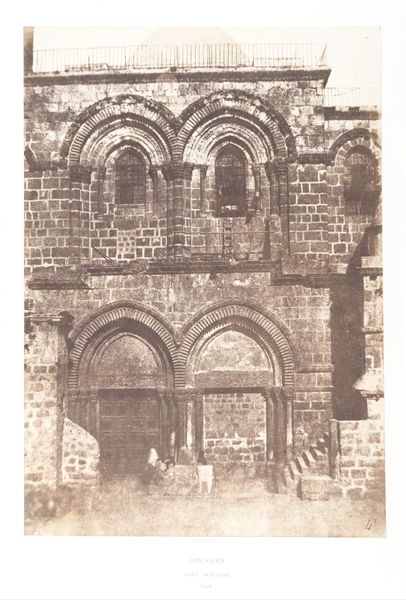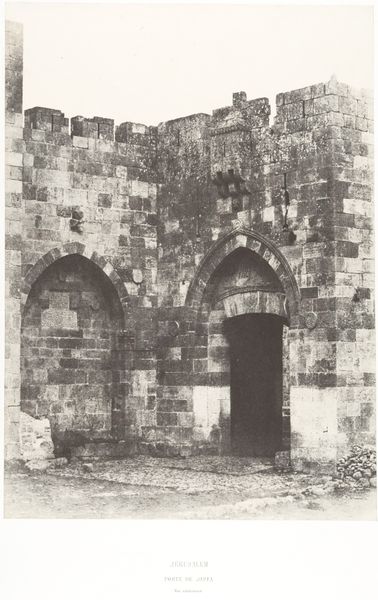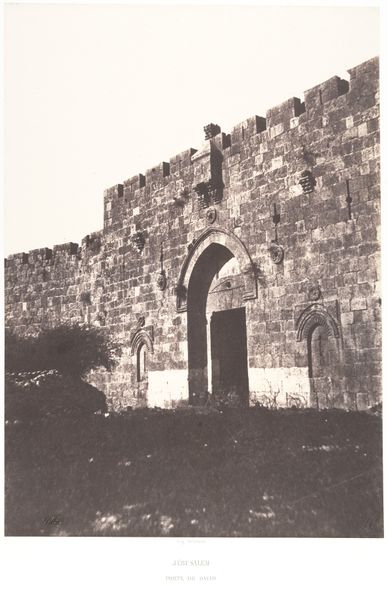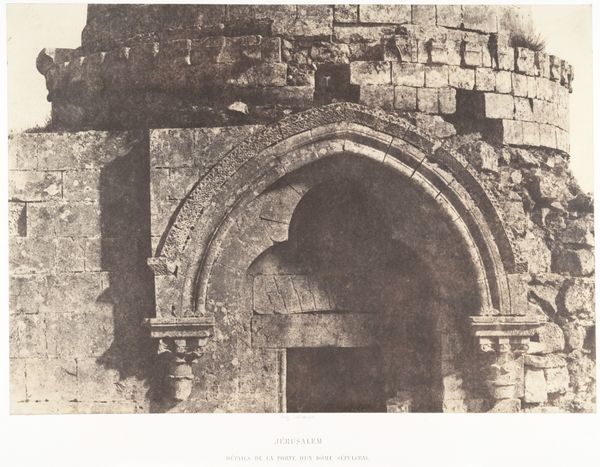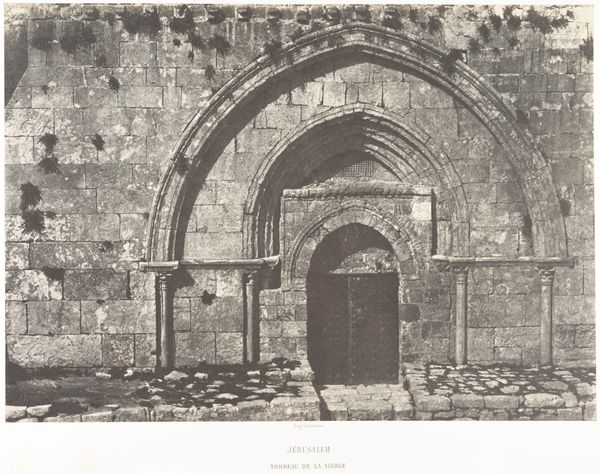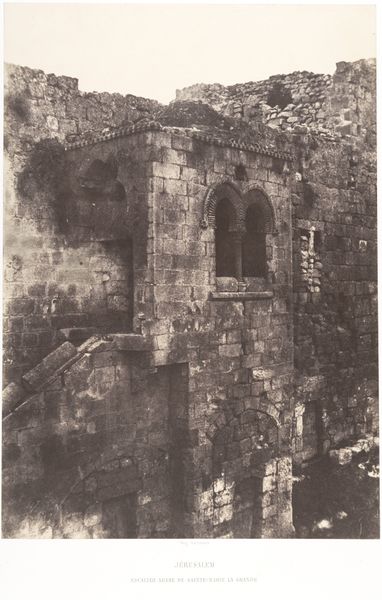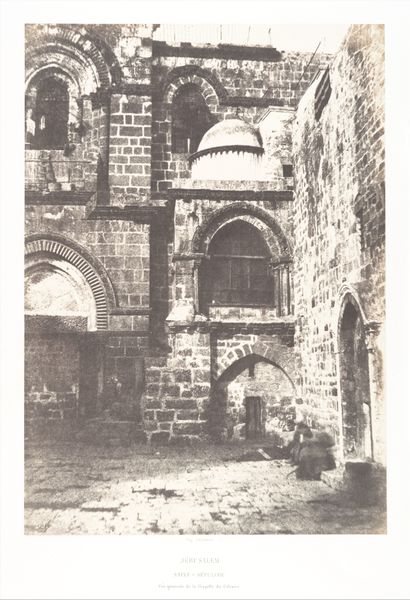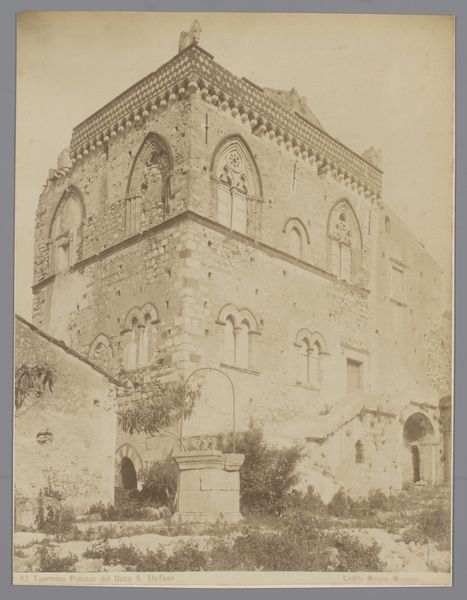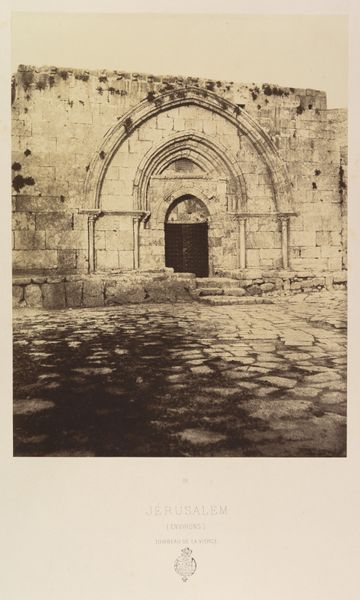
Jérusalem, Enceinte du Temple, Porte Dorée 1854 - 1859
0:00
0:00
architecture
#
photo of handprinted image
#
natural shape and form
#
natural tone
#
organic shape
#
white palette
#
unrealistic statue
#
carved into stone
#
arch
#
natural palette
#
watercolor
#
architecture
#
shadow overcast
Dimensions: Image: 32 x 22.4 cm (12 5/8 x 8 13/16 in.) Mount: 60 x 44.8 cm (23 5/8 x 17 5/8 in.)
Copyright: Public Domain
Curator: Let’s consider this compelling image by Auguste Salzmann: "Jérusalem, Enceinte du Temple, Porte Dorée," taken between 1854 and 1859. What's your immediate reaction? Editor: Stark and somber. There's a weightiness in the materiality, a stillness that suggests the passage of immense time and potentially the witnessing of immense suffering. The texture alone makes me think of histories layered upon histories. Curator: Indeed. The architectural structure dominates—note the interplay of light and shadow on the rough-hewn stones. Observe how the artist has meticulously rendered each block, delineating the arches and the recessed panels with stark clarity. This precise delineation reveals a calculated sense of space and form. Editor: And it’s that “sense of space and form” that becomes ethically complicated when we situate Salzmann’s project within the context of 19th-century French colonialism. Photography was a tool of documentation, yes, but also of power. How does depicting this ancient site serve imperial interests by visually claiming territory and reducing a vibrant, lived space into a silent object? Curator: An interesting point. One could equally argue the photographic focus calls attention to enduring forms. Look at the way the arches echo each other, creating a visual rhythm that emphasizes their inherent design. And the geometric interplay between the rectangles and the rounded shapes adds visual interest to the otherwise monolithic façade. Editor: But is this formal elegance the only story? The Golden Gate, blocked and silent, holds enormous symbolic weight for multiple faiths. By photographing this particular site, Salzmann participates in a longer tradition of Western fascination with the "Orient," reducing complex histories and beliefs into a single, consumable image. We must be critical of whose narratives are privileged and whose are silenced in this representation. Curator: Perhaps. Still, its enduring appeal lies in its stark, structural qualities, allowing us to study its components through visual means. Editor: It challenges us to remember that photographs aren't neutral records. Every image, especially one laden with historical and political baggage, is an interpretation—a choice. Curator: A potent reminder to question visual presentations.
Comments
No comments
Be the first to comment and join the conversation on the ultimate creative platform.

